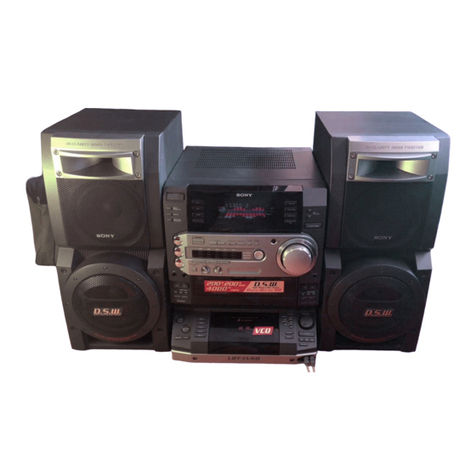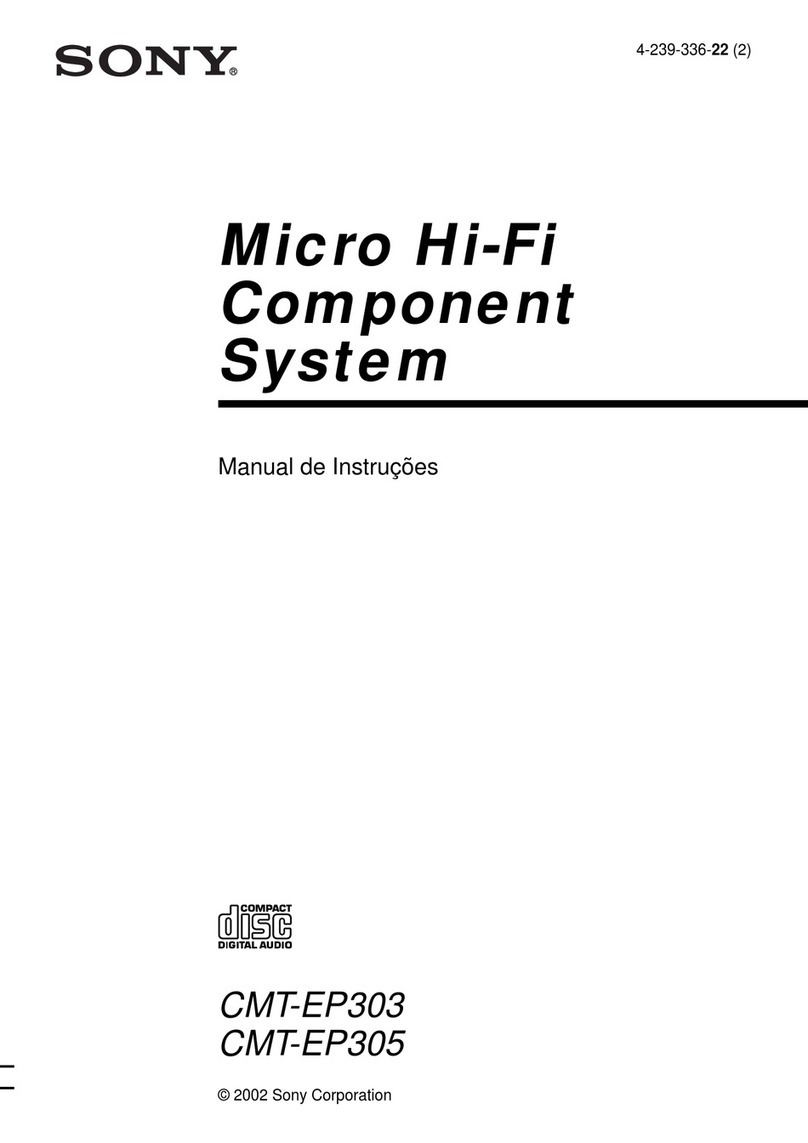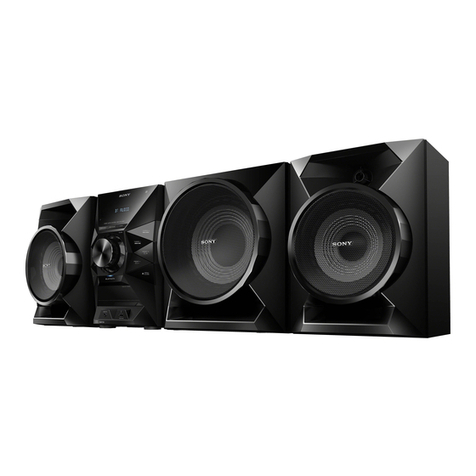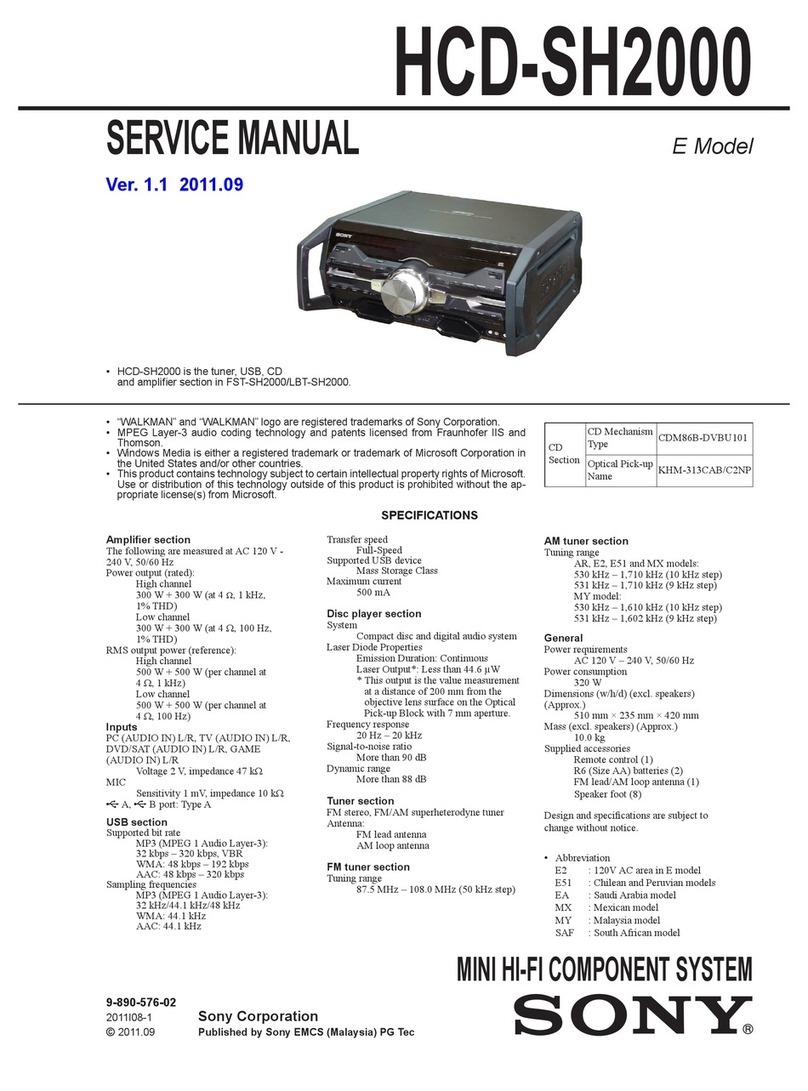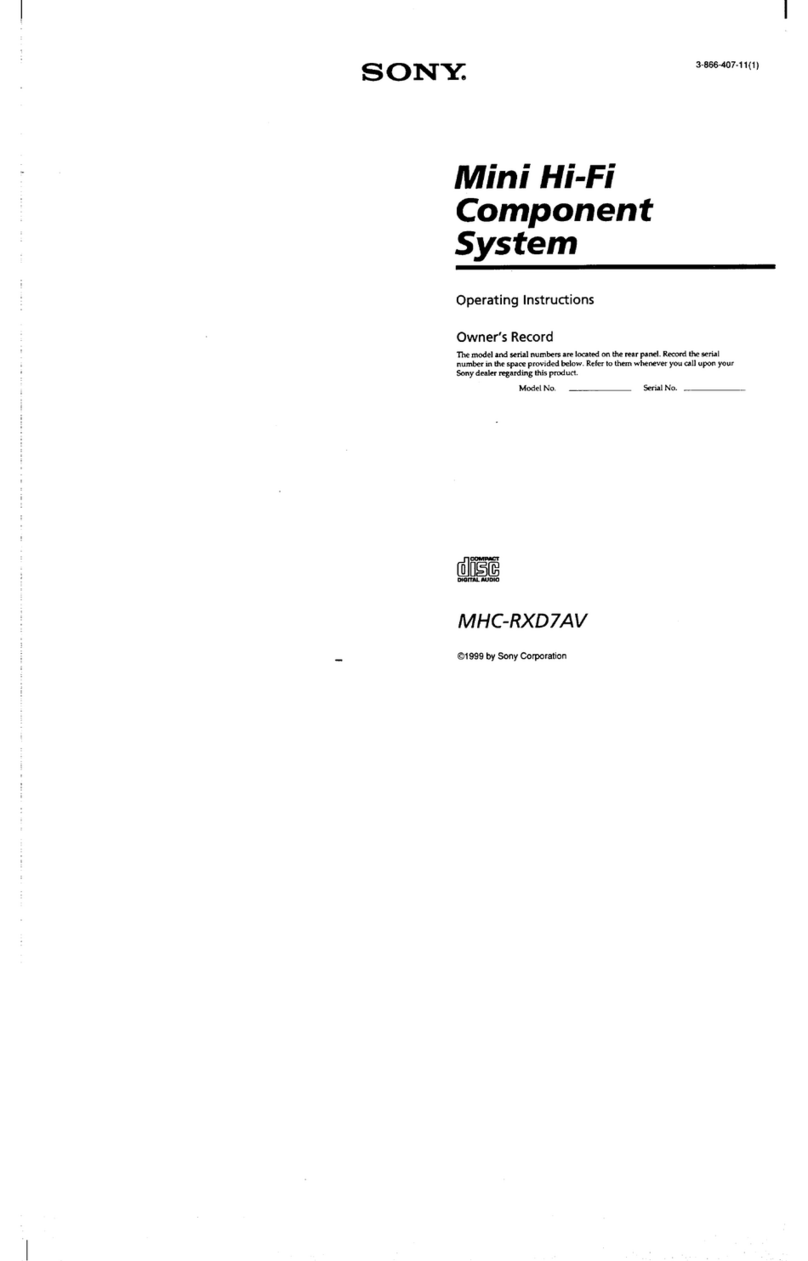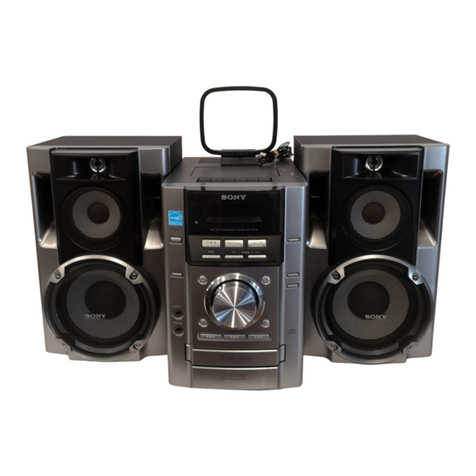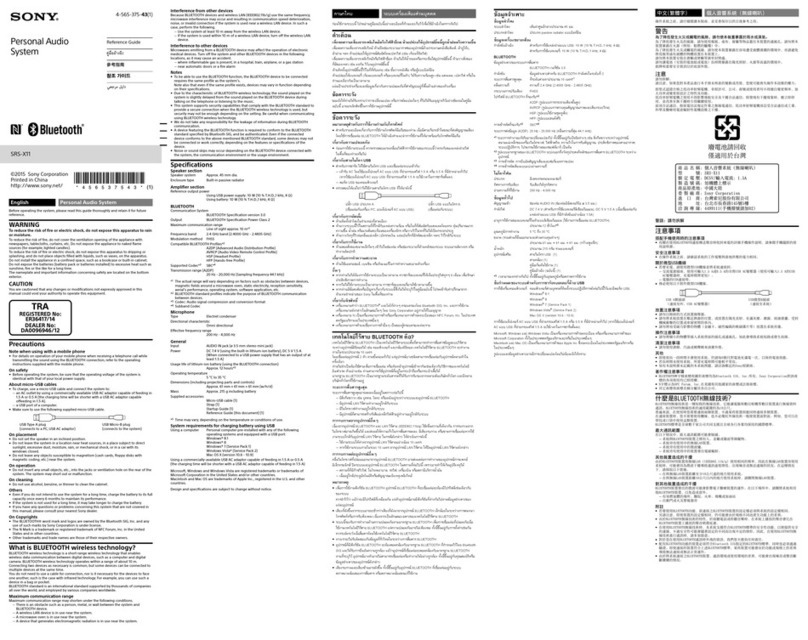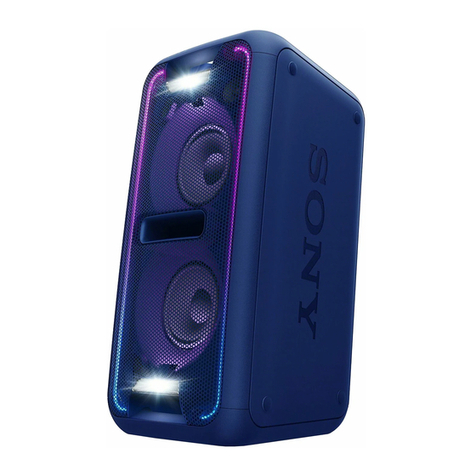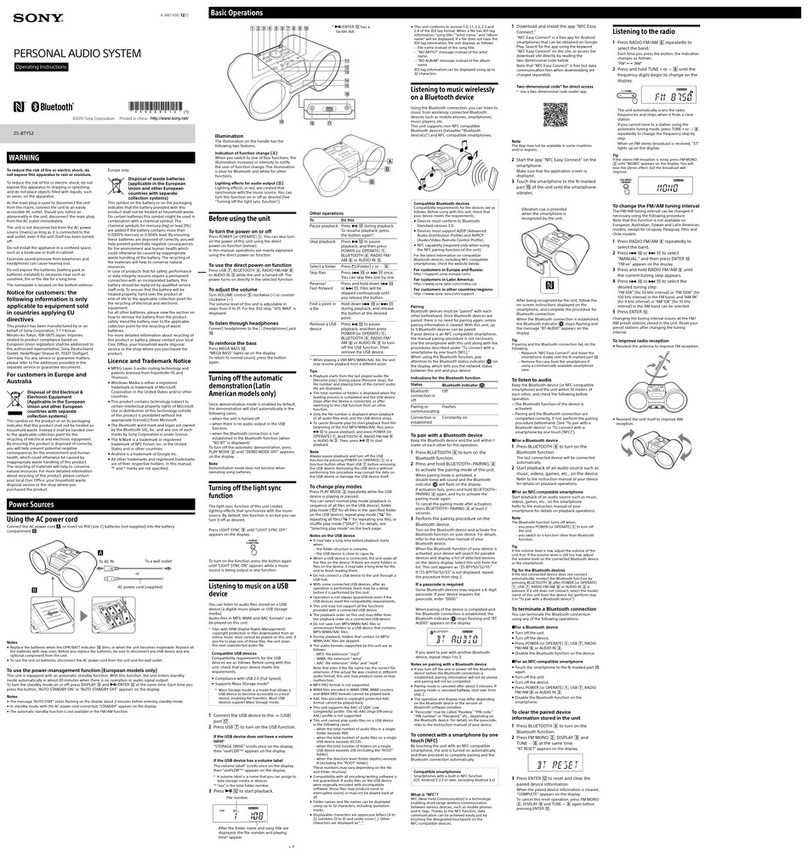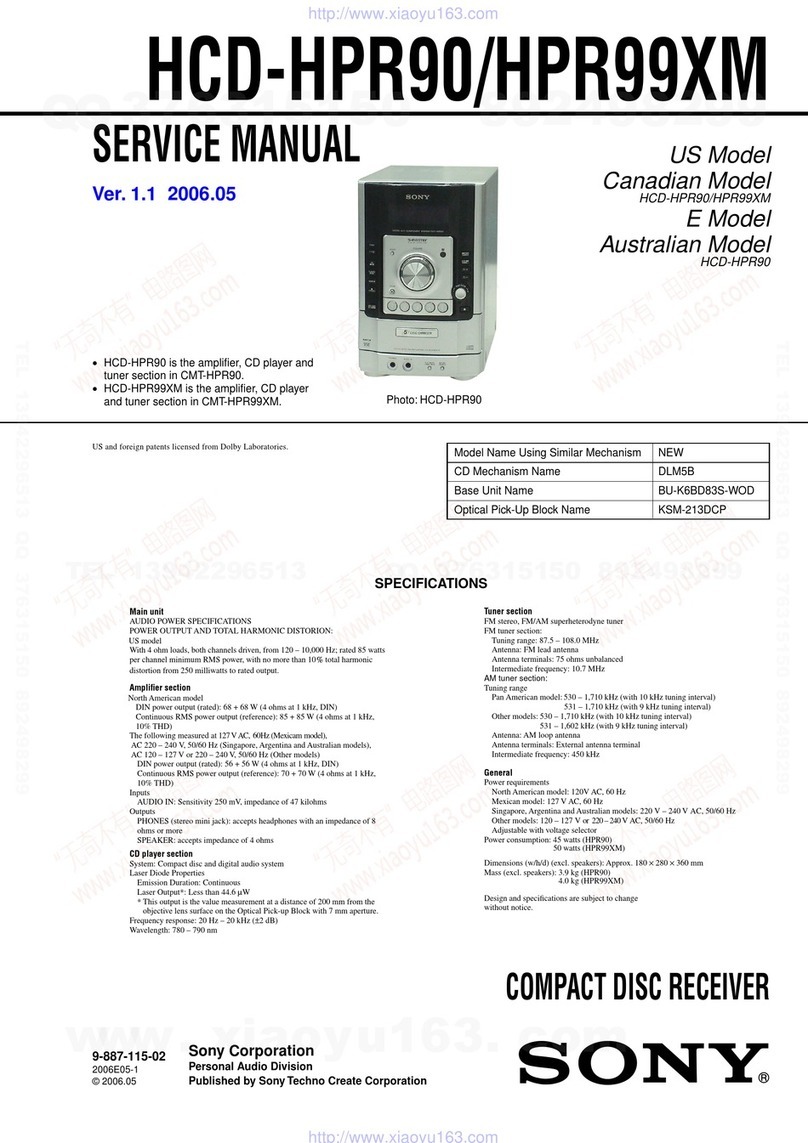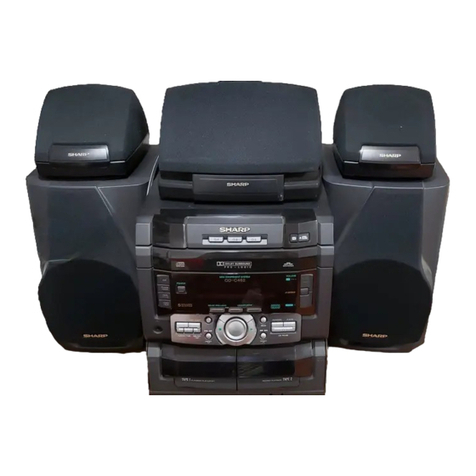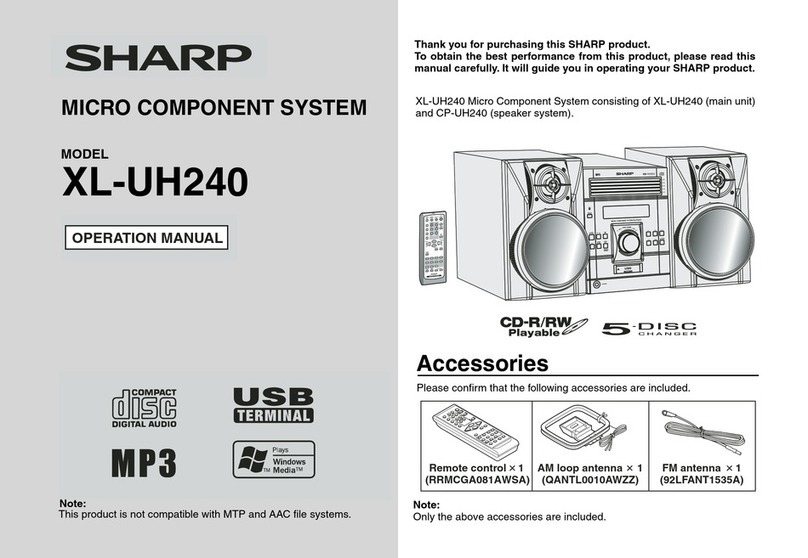2
HCD-MG110/MG310AV
TABLE OF CONTENTS
Tape player section
Recording system 4-track 2-channel stereo
Frequency response 40 –13,000 Hz (±3 dB),
using Sony TYPE I
cassette
Tuner section
FM stereo, FM/AM superheterodyne tuner
FM tuner section
Tuning range 87.5 –108.0 MHz
Antenna FM lead antenna
Antenna terminals
North American model: 75 ohms unbalanced
Australian model: 75 ohms balanced
Intermediate frequency 10.7 MHz
AM tuner section
Tuning range 530 –1,710 kHz
(with the interval set at
10 kHz)
531 –1,710 kHz
(with the interval set at
9 kHz)
Antenna AM loop antenna
Antenna terminals External antenna terminal
Intermediate frequency 450 kHz
General
Power requirements 120 V AC, 60 Hz
Power consumption
HCD-MG310AV: 200 watts
HCD-MG110: 150 watts
Dimensions (w/h/d) incl. projecting parts and controls
Approx. 280 ×383 ×480
mm
Mass
HCD-MG310AV: Approx. 11.3 kg
HCD-MG110: Approx. 10.9 kg
Design and specifications are subject to change
without notice.
1. SERVICING NOTE.................................................. 4
2. GENERAL ................................................................... 5
3. DISASSEMBLY
3-1. Disassembly Flow ........................................................... 7
3-2. Upper Cover .................................................................... 8
3-3. Front Block Assy............................................................. 8
3-4. MAIN Board ................................................................... 9
3-5. Back Panel....................................................................... 9
3-6. “MAIN AMP Board”, “POWER Board”........................ 10
3-7. “Middle (F) Assy”, “Bracket (Middle-R)”,
“Power Bracket”.............................................................. 10
3-8. Mechanism Deck (CDM64-K1BD44A)......................... 11
3-9. Base Unit (BU-K1BD44A)............................................. 11
3-10. BU Holder Assy .............................................................. 12
3-11. “Motor Gear Assy (Sled) (M102)”, “CD Board”........... 12
3-12. Op Base Assy (KSM-213BFN) ...................................... 13
3-13. Cassette Lid Assy (A)/(B)............................................... 13
3-14. Mech Deck ...................................................................... 14
4. MECHANICAL ADJUSTMENTS....................... 15
5. DIAGRAMS
5-1. Block Diagram –CD SERVO Section –........................ 17
5-2. Block Diagram –TUNER/TAPE DECK Section –...... 18
5-3. Block Diagram –SURROUND Section –...................... 19
5-4. Block Diagram –AMP Section –................................... 20
5-5. Block Diagram
–DISPLAY/POWER SUPPLY Section –...................... 21
5-6. Note for Printed Wiring Boards and
Schematic Diagrams ....................................................... 22
5-7. Schematic Diagram –CD Section –............................... 24
5-8. Printed Wiring Board –CD Section –............................ 25
5-9. Printed Wiring Boards
–CD MOTOR/SENSOR Section –................................ 26
5-10. Schematic Diagram
–CD MOTOR/SENSOR Section –................................ 27
5-11. Printed Wiring Board –TC Section –............................. 28
5-12. Schematic Diagram –TC Section –............................... 29
5-13. Schematic Diagram –MAIN Section (1/4) –................. 30
5-14. Schematic Diagram –MAIN Section (2/4) –................. 31
5-15. Schematic Diagram –MAIN Section (3/4) –................. 32
5-16. Schematic Diagram –MAIN Section (4/4) –................. 33
5-17. Printed Wiring Board –MAIN Section –....................... 34
5-18. Printed Wiring Boards –AMP Section –........................ 36
5-19. Schematic Diagram –AMP Section –............................ 37
5-20. Printed Wiring Boards –DISPLAY Section –............... 38
5-21. Schematic Diagram –DISPLAY Section –.................... 39
5-22. Printed Wiring Board –CONTROL Section –............... 40
5-23. Schematic Diagram –CONTROL Section –.................. 41
5-24. Printed Wiring Boards –POWER Section –.................. 42
5-25. Schematic Diagram –POWER Section –...................... 43
5-26. IC Pin Function Description ........................................... 44
6. EXPLODED VIEWS
6-1. General Section ............................................................... 50
6-2. Front Panel Section ......................................................... 51
6-3. Chassis Section ............................................................... 52
6-4. Mechanism Deck Section (CDM64-K1BD44A) ........... 53
6-5. Base Unit Section (BU-K1BD44A) ............................... 54
7. ELECTRICAL PARTS LIST ............................... 55
